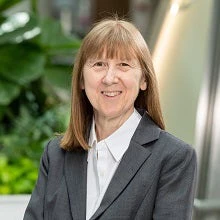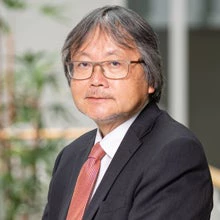 Photo credit: MehmetO/Shutterstock
Photo credit: MehmetO/Shutterstock
We had the honor last week to walk together across the iconic Old Bridge, or Stari Most, which connects the two parts of the city of Mostar in Bosnia and Herzegovina. Two decades after the reconstruction of this unique symbol of reconciliation, Mostar’s message to the world remains as powerful as ever: peace and progress are attainable, but they require scaling up efforts and partnerships to promote economic development and address the root causes of fragility and conflict.
The story of the Mostar Bridge is a microcosm of Bosnia and Herzegovina’s journey from conflict to recovery. When artillery fire brought down the bridge in 1993, it shattered more than just an architectural and national treasure. As one resident told us, “It was the saddest day of our lives. We wept for it as if it were a loved one.” The bridge’s collapse represented the fracturing of a diverse society and underscored the daunting challenges of reconciliation.
Yet, against all odds, the bridge rose again. This resurrection was made possible by the determination of local communities, the authorities, and the swift action of international partners, including the World Bank Group. Through emergency operations financed by the International Development Association (IDA), the World Bank’s fund for low-income countries, we helped Bosnia and Herzegovina rebuild not just its infrastructure, but its economy and social fabric.
Today, Bosnia and Herzegovina stands as a testament to what is possible when the international community rallies behind a country emerging from conflict. It has transformed from a low-income to an upper-middle-income status country aspiring to join the European Union. As Bosnia and Herzegovina continues to rebuild and develop its economy, it made the leap to become an IDA donor in 2023, ready to help other nations on their journey to stability and prosperity.
However, as we celebrate these achievements, we cannot ignore the stark reality facing many other parts of the world. Since 2010, violent conflict has surged dramatically in several regions. The COVID-19 pandemic has further destabilized fragile situations across the globe, from Asia and Africa to Latin America and the Caribbean, and more recently in Eastern Europe and the Middle East.
The statistics are sobering. The World Bank estimates that 324 million extremely poor people live in 33 countries classified as fragile and conflict affected. By 2030, nearly 60 percent of the world’s extreme poor will reside in such nations. Conflict is also the primary driver of hunger, with 70 percent of the world’s hungry living in war-torn areas.
Despite these overwhelming challenges, we remain committed to helping countries transition from crisis to achieving sustainable growth so that they can chart their own futures. Over the past five years, the World Bank has significantly increased our engagement in fragile and conflict-affected situations. The share of IDA resources going to these countries has increased fivefold over the past decade, now comprising about 40 percent of total IDA resources.
Our approach is multi-faceted and adaptive. We’re scaling up support in critical regions like the Sahel, Lake Chad, the Horn of Africa, and Central Asia. We’ve introduced targeted financing mechanisms like the Fragility, Conflict, and Violence Envelope and the Window for Host Communities and Refugees. These tools allow us to tailor our support to specific situations and address the complex needs of both refugee and host populations.
Partnerships are at the heart of our work, particularly in fragile contexts. We’re strengthening collaborations with United Nations agencies, the International Monetary Fund, development banks, the European Commission, bilateral partners, regional institutions, and civil society organizations. Through these partnerships, we’ve achieved tangible results.
In Burkina Faso, our program has supported the socio-economic reintegration of internally displaced persons through support for income-generating activities and awareness-raising sessions on social cohesion. In the Central African Republic, our cash-for-work program has given jobs to tens of thousands of vulnerable individuals. In Rwanda, we’ve supported the demobilization and reintegration of 70,000 ex-combatants into society. In Kosovo, thanks to the extension of fiber-optic high-speed broadband to over 200 villages, more than 60,000 individuals in rural areas, remote schools, and hospitals have gained access to the digital world. In Ukraine, with resources from the international community the World Bank Group has helped deliver essential services to the population, facilitated infrastructure repairs, and supported key reforms. Affected neighboring countries have also received support to help refugees and mitigate the impact of the crisis.
As we reflect on our visit to Mostar, we’re reminded that the need to build bridges—both literal and metaphorical—has never been greater. The reconstruction of Stari Most wasn’t just about restoring a physical structure, it was about reconnecting communities and rekindling hope. This is the essence of our mission at the World Bank Group.
We believe that by providing people with opportunities, driving economic development, creating jobs, and fostering inclusion, we can build bridges between communities torn apart by conflict. We can transform fragility into resilience, and conflict into cooperation.
The journey from destruction to reconstruction, from poverty to prosperity, is never easy. However, as the story of Mostar Bridge shows, it is possible. With unwavering commitment, strong partnerships, and targeted support, we can help more countries cross the bridge to a peaceful and prosperous future.
This blog was originally published on Euractiv.



Join the Conversation